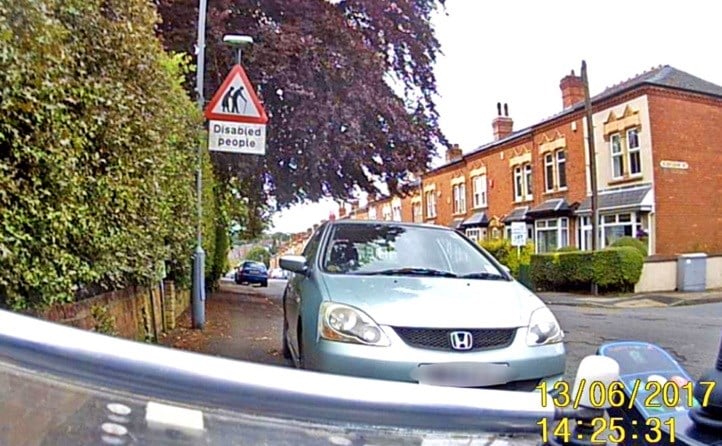This research shows that for people with disabilities – whose bodies function outside the presumed operating parameters of the ‘model subjects’ of urban design – mobility may be possible, but is often uncomfortable and sometimes dangerous.

Inconsiderately parked cars are a significant mobility challenge
The issues of urban design and localised mobility investigated through this research project are questions of social justice.
The research team worked with adults with Cerebral Palsy in Birmingham to uncover their everyday mobility challenges. The research involved ‘going along’ on everyday journeys – short trips to the shops on Harborne High Street – with our participants and their carers. They also undertook post-journey interviews.
The results are very revealing. Impediments range from inconsiderately parked cars, to uneven pavements and the limited visibility of dropped kerbs. Such things have significant effects on impaired people’s autonomy. Those who took part in the study voiced experiencing stigma, fear, dependence, humiliation and marginalisation.
In the absence of much capacity to account for such things in traditional transport appraisal and policy, this research suggests a ‘commoning’ approach to transport planning involving representatives of the entire community. Many of the issues facing people with disabilities are familiar to other groups (e.g. parents with pushchairs, older people) and in this sense the key issue, after all, is accessibility for everyone.
The issues of urban design and localised mobility investigated through this research project are questions of social justice. They are crucial to attaining the Equality Act’s requirement that people with disabilities should be treated as full members of the community, with the right to access public and private spaces on the same terms as everyone else.
